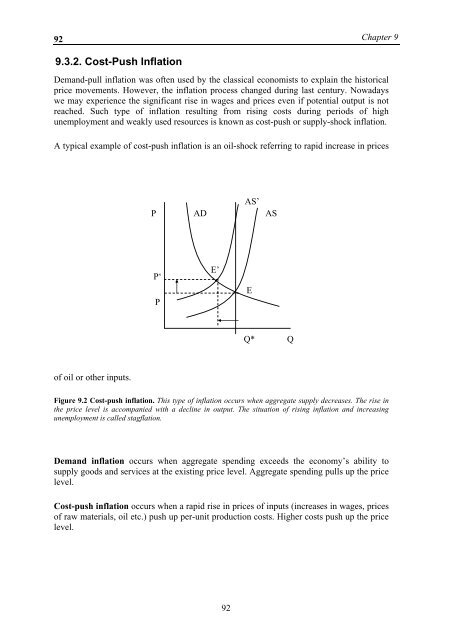MacroeconomicsI_working_version (1)
You also want an ePaper? Increase the reach of your titles
YUMPU automatically turns print PDFs into web optimized ePapers that Google loves.
92<br />
Chapter 9<br />
9.3.2. Cost-Push Inflation<br />
Demand-pull inflation was often used by the classical economists to explain the historical<br />
price movements. However, the inflation process changed during last century. Nowadays<br />
we may experience the significant rise in wages and prices even if potential output is not<br />
reached. Such type of inflation resulting from rising costs during periods of high<br />
unemployment and weakly used resources is known as cost-push or supply-shock inflation.<br />
A typical example of cost-push inflation is an oil-shock referring to rapid increase in prices<br />
P<br />
AD<br />
AS’<br />
AS<br />
P‘<br />
P<br />
E’<br />
E<br />
Q*<br />
Q<br />
of oil or other inputs.<br />
Figure 9.2 Cost-push inflation. This type of inflation occurs when aggregate supply decreases. The rise in<br />
the price level is accompanied with a decline in output. The situation of rising inflation and increasing<br />
unemployment is called stagflation.<br />
Demand inflation occurs when aggregate spending exceeds the economy’s ability to<br />
supply goods and services at the existing price level. Aggregate spending pulls up the price<br />
level.<br />
Cost-push inflation occurs when a rapid rise in prices of inputs (increases in wages, prices<br />
of raw materials, oil etc.) push up per-unit production costs. Higher costs push up the price<br />
level.<br />
92




